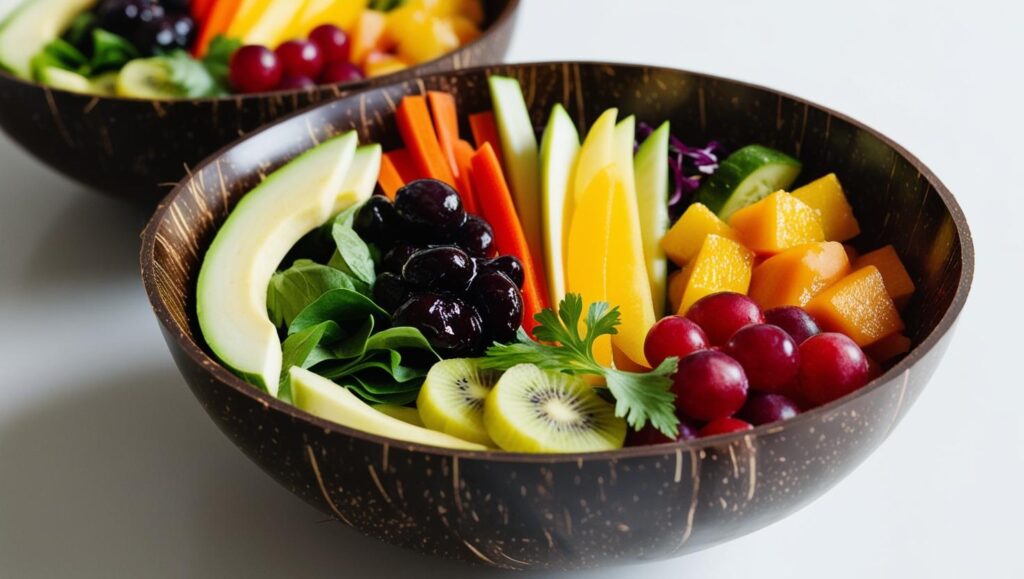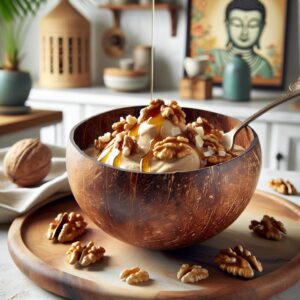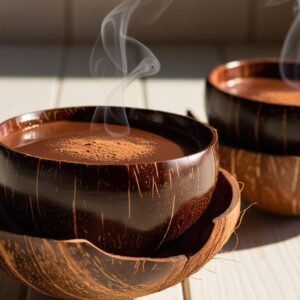Insights from Chefs and Nutritionists
Buddha bowls have taken the culinary and wellness world by storm, becoming a go-to meal for those seeking a harmonious blend of nutrition, flavor, and aesthetics. These colorful, nutrient-packed bowls are not only a feast for the eyes but also a powerhouse of health benefits. To understand the magic behind these bowls, we spoke to chefs and nutritionists who specialize in crafting the perfect Buddha bowl. From their inspirations to their favorite ingredients, here’s what they had to share.
Buddha Bowl Success Stories: Insights from Chefs and Nutritionists
The Art of Balance
Chef Mia Thompson, a plant-based culinary expert, believes that the secret to a great Buddha bowl lies in balance. “A Buddha bowl is like a symphony,” she says with a warm smile. “You need the right mix of flavors, textures, and colors to create something truly satisfying.”
Mia’s go-to formula? A base of whole grains like quinoa or brown rice, a generous serving of fresh and roasted veggies, a source of plant-based protein like chickpeas or tofu, and a drizzle of homemade dressing. “And don’t forget the toppings!” she adds. “Seeds, nuts, or a sprinkle of nutritional yeast can elevate your bowl to the next level.”
When asked about presentation, Mia emphasizes the importance of using coconut bowls. “There’s something so grounding about eating from a natural coconut bowl. It adds an earthy vibe that enhances the whole experience.”
Nutrition Meets Creativity
Registered dietitian and food blogger Sarah Nguyen approaches Buddha bowls as a way to make healthy eating fun. “People often think healthy food is boring, but Buddha bowls prove otherwise,” she explains. “You can play with so many ingredients and flavors while still keeping it nutritious.”
Sarah loves incorporating seasonal produce into her bowls. “Right now, I’m all about roasted sweet potatoes, kale, and pomegranate seeds,” she shares. “They’re not only delicious but also packed with vitamins and antioxidants.”
She also stresses the importance of healthy fats. “Avocado slices or a tahini-based dressing can make your bowl more satisfying and help your body absorb fat-soluble vitamins,” Sarah notes. And just like Chef Mia, Sarah is a fan of coconut bowls. “They’re sustainable, lightweight, and make your meal feel like an event.”
A Cultural Fusion
Chef Ravi Patel brings an international twist to his Buddha bowls by incorporating flavors from his Indian heritage. “I love adding spiced lentils or chickpea curry as the protein component,” he says. “It’s hearty, flavorful, and pairs beautifully with greens and grains.”
Ravi also experiments with chutneys as dressings. “A dollop of mint-cilantro chutney or tamarind sauce can add so much depth to your bowl,” he explains. His favorite base? A mix of basmati rice and quinoa for a blend of textures.
When it comes to presentation, Ravi swears by coconut bowls. “They remind me of my travels through tropical regions in India. Plus, they’re eco-friendly and just plain beautiful.”
Tips for Building Your Own Buddha Bowl
We asked our experts for their top tips on creating the perfect Buddha bowl at home:
- Start with a Solid Base
Whole grains like quinoa, farro, or brown rice provide a hearty foundation. For a low-carb option, try cauliflower rice or zucchini noodles. - Pile on the Veggies
Use a mix of raw and cooked vegetables for variety. Think roasted sweet potatoes, steamed broccoli, shredded carrots, or fresh cucumber slices. - Add Protein
Whether it’s grilled chicken, marinated tofu, black beans, or boiled eggs, make sure your bowl has a protein source to keep you full and energized. - Don’t Skimp on the Sauce
A flavorful dressing ties everything together. Experiment with tahini-based sauces, peanut dressing, or even a simple olive oil and lemon combo. - Finish with Toppings
Sprinkle on seeds, nuts, microgreens, or even some dried fruit for added texture and flavor.
Why Coconut Bowls?
Beyond their aesthetic appeal, coconut bowls are an eco-friendly choice that aligns with the mindful eating philosophy behind Buddha bowls. Made from reclaimed coconut shells that would otherwise go to waste, these bowls are biodegradable and sustainable. Plus, they add a touch of tropical charm to your meal!
Nutritionist Sarah Nguyen points out another benefit: “Eating from a coconut bowl encourages portion control because they’re naturally smaller than traditional plates.” Chef Ravi agrees: “It’s not just about the food; it’s about the experience.”
Inspiring Stories from the Kitchen
Each expert we spoke to had their own reason for falling in love with Buddha bowls. For Chef Mia, it was about finding a way to make plant-based eating exciting for her clients. For Sarah, it was discovering how easy it was to turn leftovers into something beautiful and nutritious. And for Ravi, it was about blending his cultural roots with modern wellness trends.
Their stories remind us that Buddha bowls are more than just trendy meals; they’re a celebration of creativity, health, and sustainability.
Buddha Bowl Success Stories: Insights from Chefs and Nutritionists
So why not grab your favorite coconut bowl and start experimenting? Whether you’re following a recipe or winging it with what you have in your fridge, remember: there’s no wrong way to make a Buddha bowl—only delicious possibilities!




